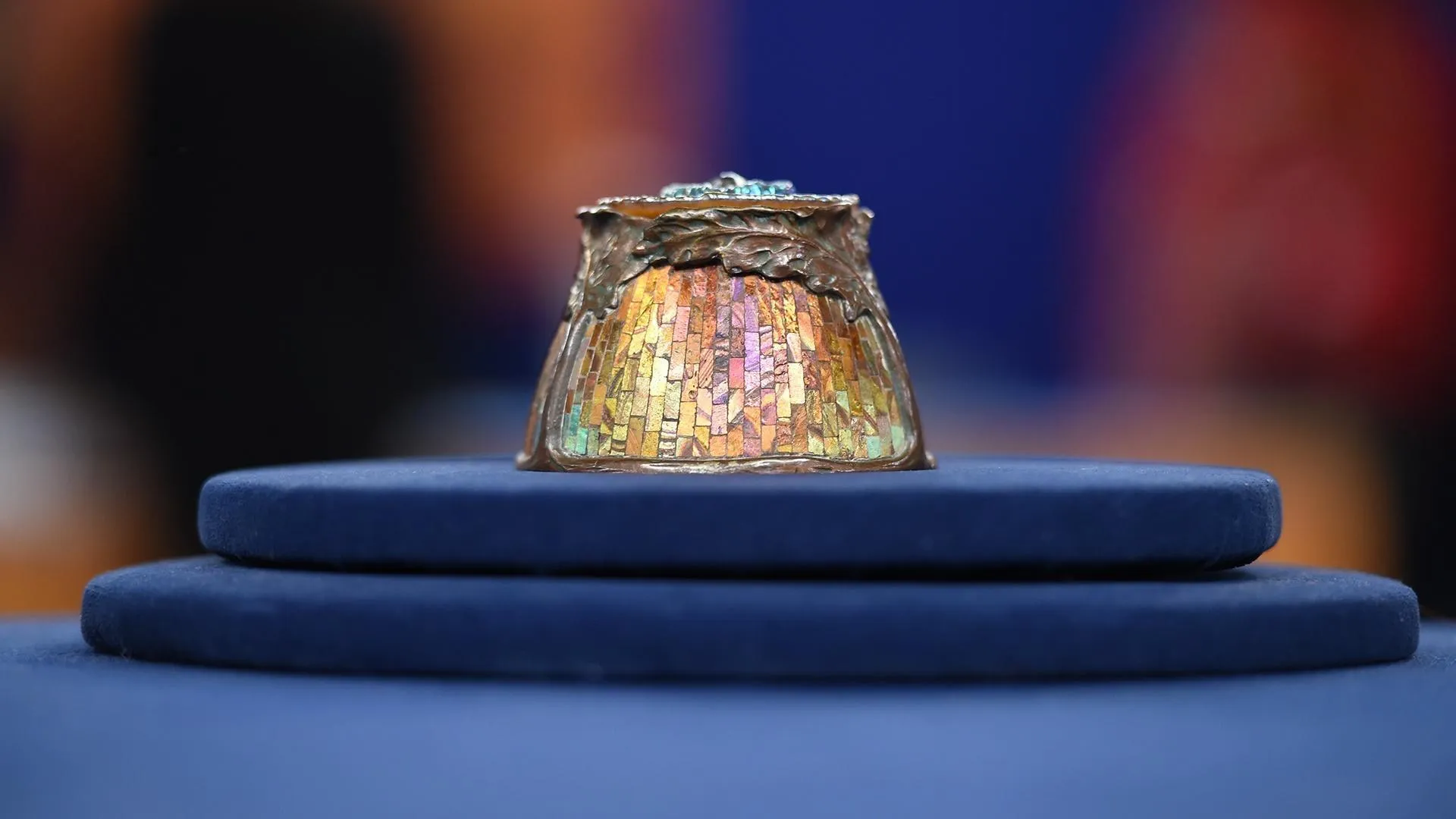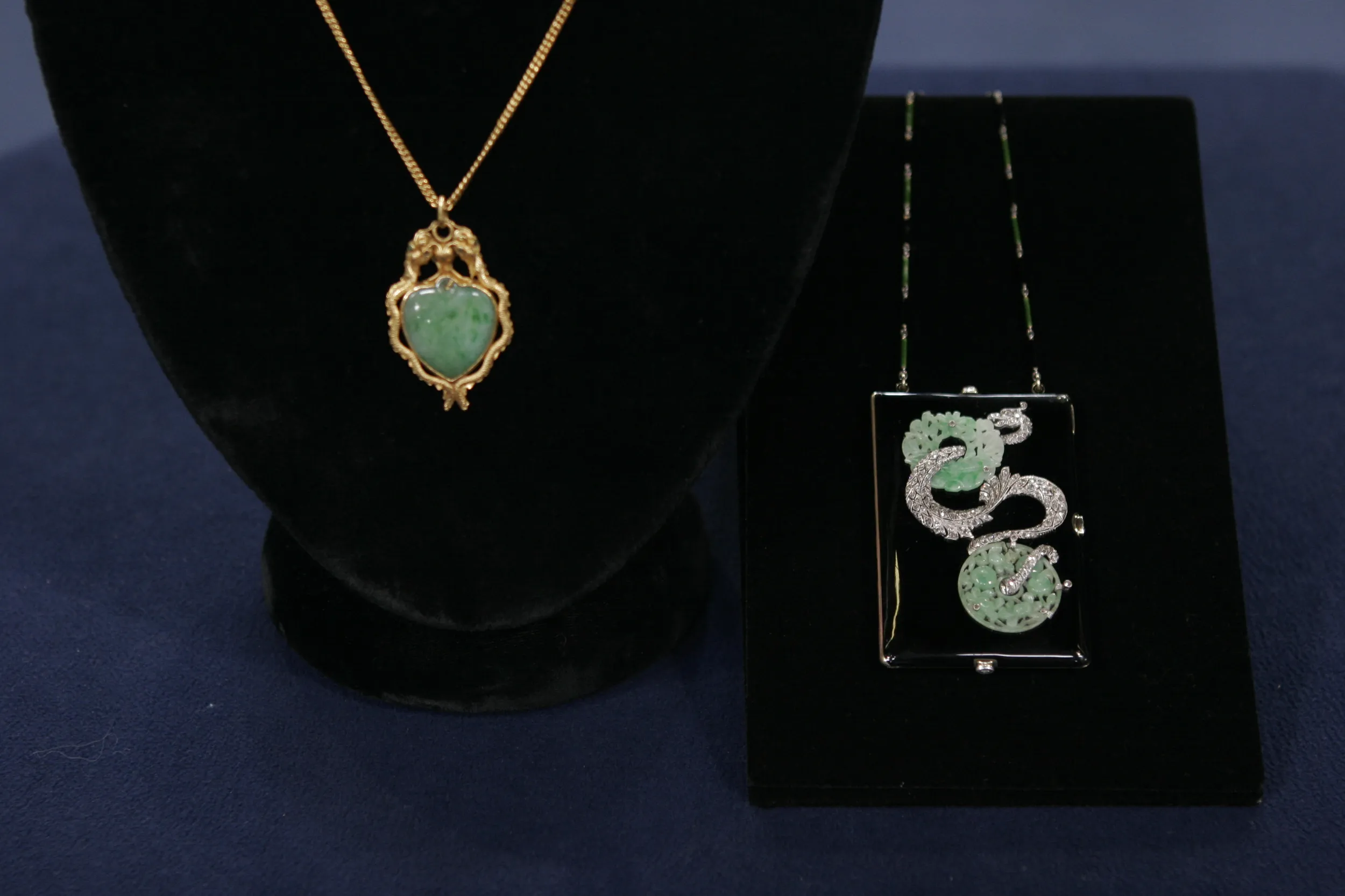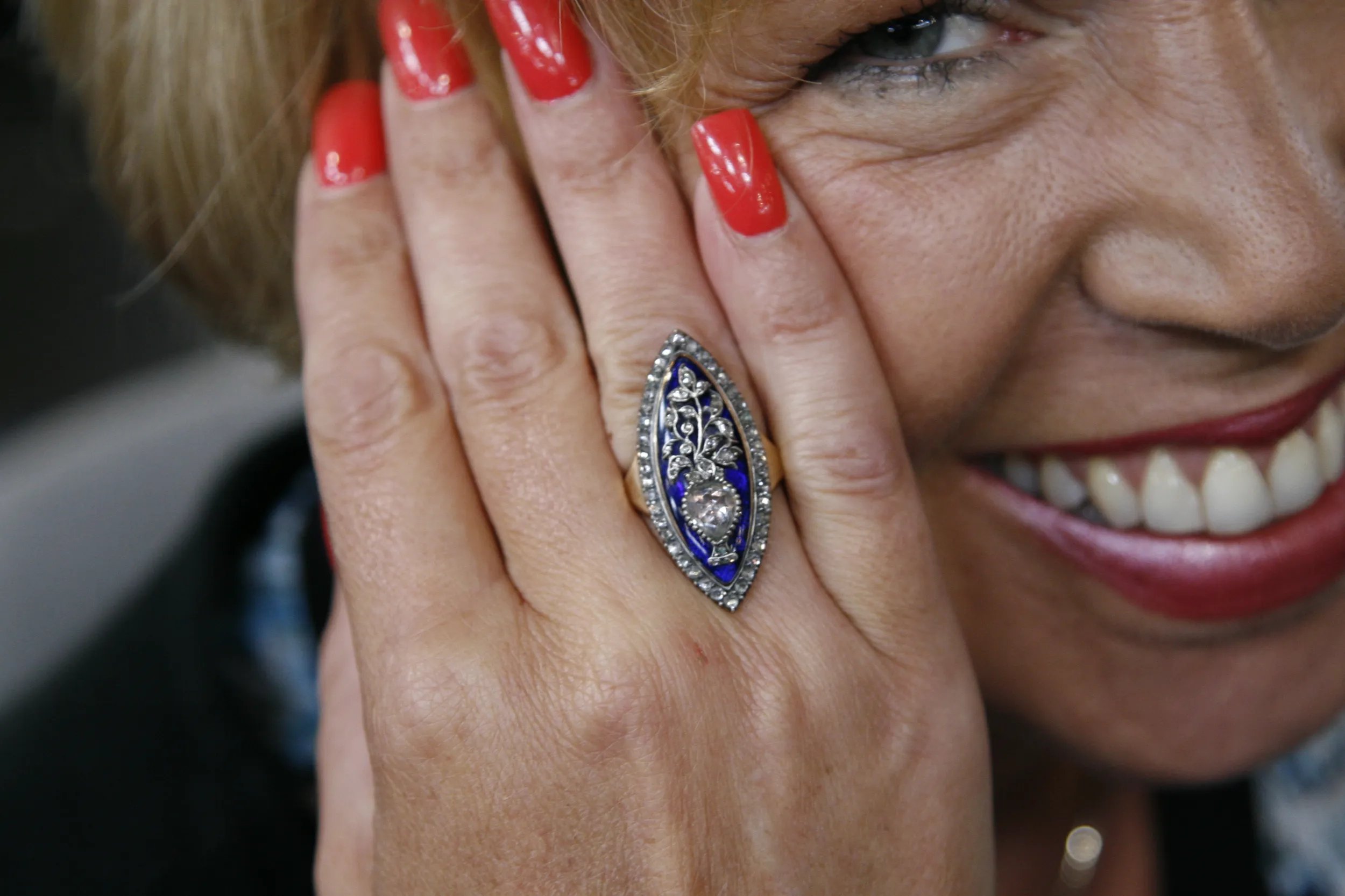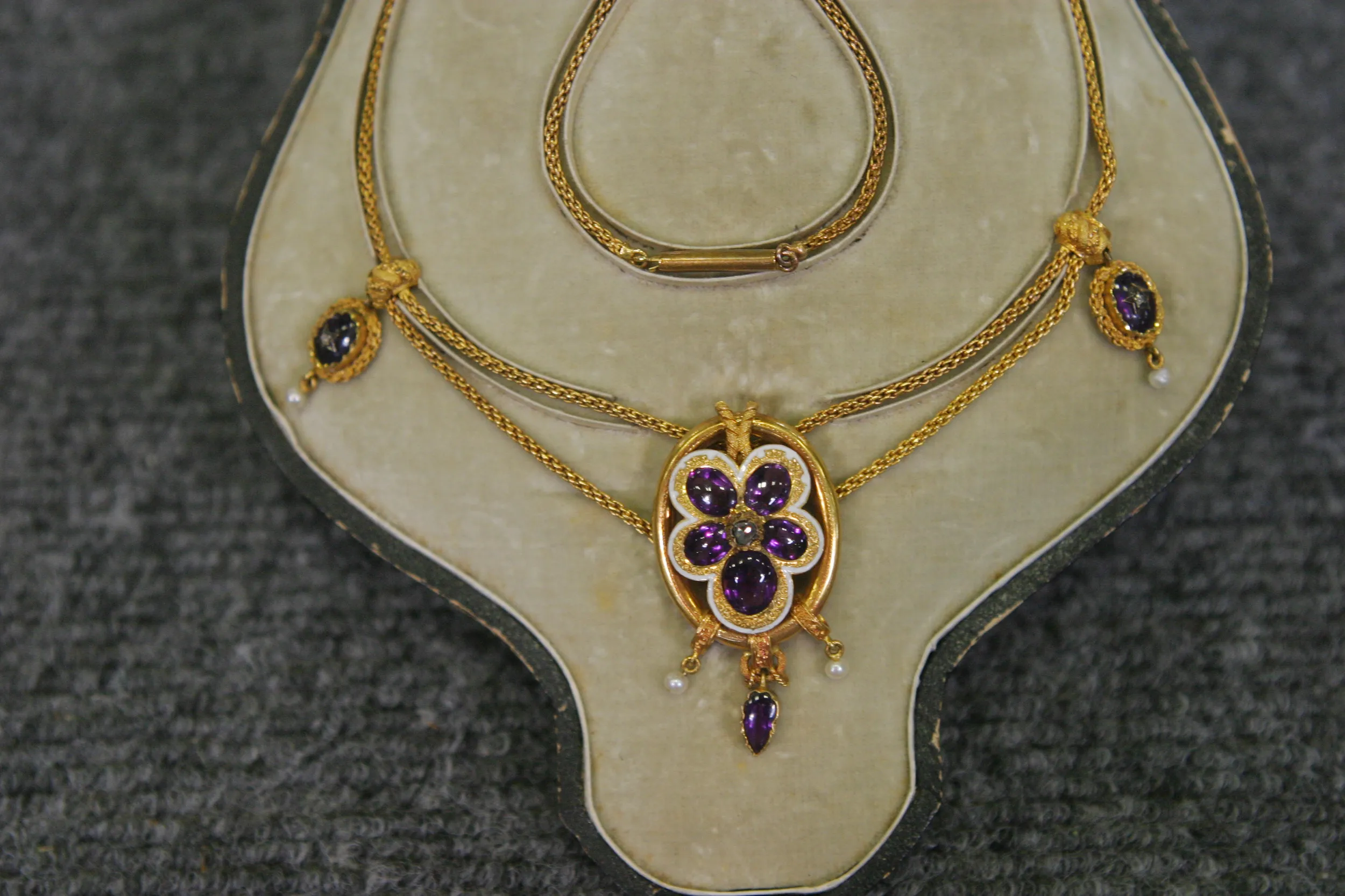GUEST: Well, as far as I know, it was given to my great-grandmother by my great-grandfather in Washington, DC. Subsequently, when she died in 1968, it passed to my grandfather, and he obviously gave it to my grandmother, and when she died in 2001, it was given to me.
APPRAISER: Well, it's a lovely gift to have received.
GUEST: Yes, it is.
APPRAISER: The necklace itself dates from about 1900 to about 1910. So it's the era we call the Edwardian era. And what the jeweler has very beautifully done here is that, from a distance, these look like they're marquise-shaped stones. But when one looks very close at the way the settings are created, they're actually round stones set into these individually hand-built marquise mountings, so as to give this beautiful streamlining effect to the collar, to the neckline of the necklace. The other part of the necklace that I find very interesting is the fact that, with this beautiful emerald here at the base, the jeweler very consciously made it so that the pendant is detachable, so that other items could have been used, as well. And if we take a close look, the pendant will detach, and you could then fold up the little clasp. And just wear that as a chevron-shaped necklace, as well. And so in inspecting the item, I was very much taken by not only the level of craftsmanship, but the degree of craftsmanship. And oddly enough, there's no signature on the piece. Typically, with an item of this quality, one would expect that there would be a signature on the item, but in this case, there is no signature. The necklace has about six-and-a-half carats worth of diamonds. The emerald at the base here, the pear-shaped emerald, weighs just a little over two carats. The stone itself is a very fine-quality stone. It's very green, it's very clear, which is ideal in an emerald.
GUEST: I noticed these gold prongs-- were these replaced?
APPRAISER: No. There is an age-old tradition where diamonds are set in platinum or white metal, and colored stones are set in yellow. So you typically will always see this, where an emerald, a ruby, or a sapphire from this period, the mounting may be in platinum, but the surrounding mounting to hold the stones will be in yellow metal. Platinum's a very hard metal to use. And because emeralds are sort of soft, you want to make sure that you weren't putting too much pressure on the stone while it was in the setting process.
GUEST: Okay.
APPRAISER: In terms of what we would call fair-market value or auction value, one could expect to get anywhere between $15,000 and $20,000 for the piece at auction. In terms of insurance, the item should probably have an insurance value of somewhere around $35,000 to $45,000.
GUEST: Okay. Wow.
APPRAISER: So it makes a nice gift.
GUEST: Yes, it does.











